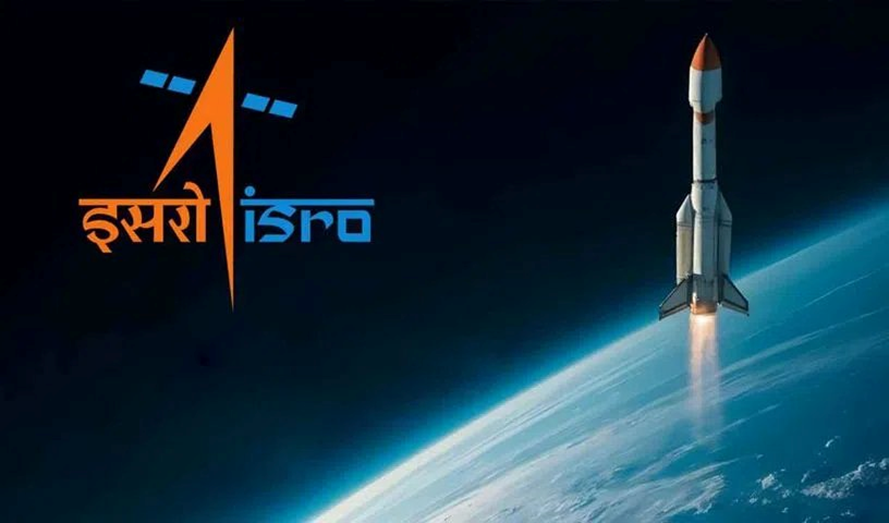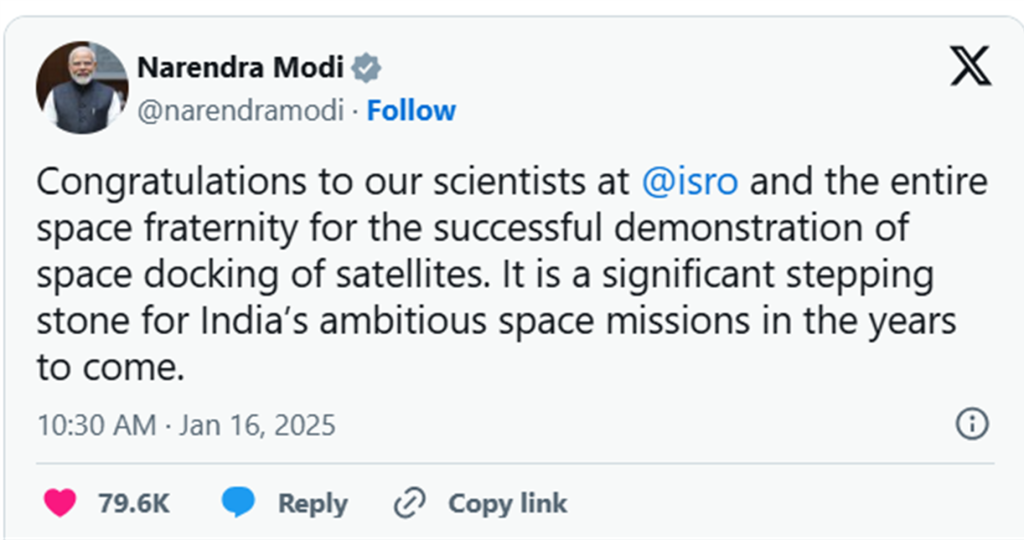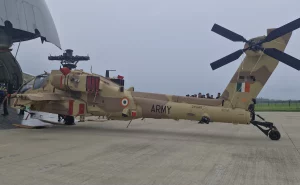The first actual Indian mission requiring the docking capability is likely to be Chandrayaan-4, which is supposed to bring lunar samples back to Earth.
ISRO Successfully Docks SpaDeX Satellites in Space
The Indian Space Research Organisation (ISRO) on Thursday successfully completed the docking process of the SpaDeX satellites. The historic moment came just days after the space agency, on January 12, brought the two spacecraft to three metres and then placed them back at a safe distance in its trial attempt to dock the satellites.
The Space Docking Experiment (SpaDeX) mission was successfully launched on December 30, 2024. ISRO shared the docking process of the SpaDeX satellites in a post on X and said that it begins with the completion of a manoeuvre from 15m to 3m hold point. Then docking is initiated with precision, leading to a successful spacecraft capture. “Retraction completed smoothly, followed by rigidisation for stability. Docking successfully completed,” it said.
Notably, India became the fourth country to achieve this successful space docking after the United States, Russia, and China. Post docking, the space agency said, the control of two satellites as a single object was also successful. “Undocking and power transfer checks to follow in coming days,” it said in an update on the mission.
Satellites in space move at very high speeds, thousands of kilometres per hour. For docking to happen, they have to move at exactly the same speed, so that relative to each other, they are almost stationary. Docking, thus, is an extremely complicated process requiring very high precision manoeuvres. The smallest of errors can lead to complete destruction of the satellites.
This extremely delicate manoeuvre had to be put off at least twice in the last few days because the two spacecraft, which had been launched into space on December 30 last year, were not able to achieve ideal conditions for docking.
The SpaDeX mission consisted of two relatively small spacecraft, called Target and Chaser, each weighing about 220 kg, that were launched together into space. They were injected with slightly different force to allow them to attain a separation of about 20 km, while keeping them in the same orbit around Earth, about 470 km from the surface. The satellites were then brought progressively closer, in stages, before being docked together on Thursday morning. The two satellites which carry several scientific payloads will eventually be undocked and fulfil their science objectives over the next two years.





















